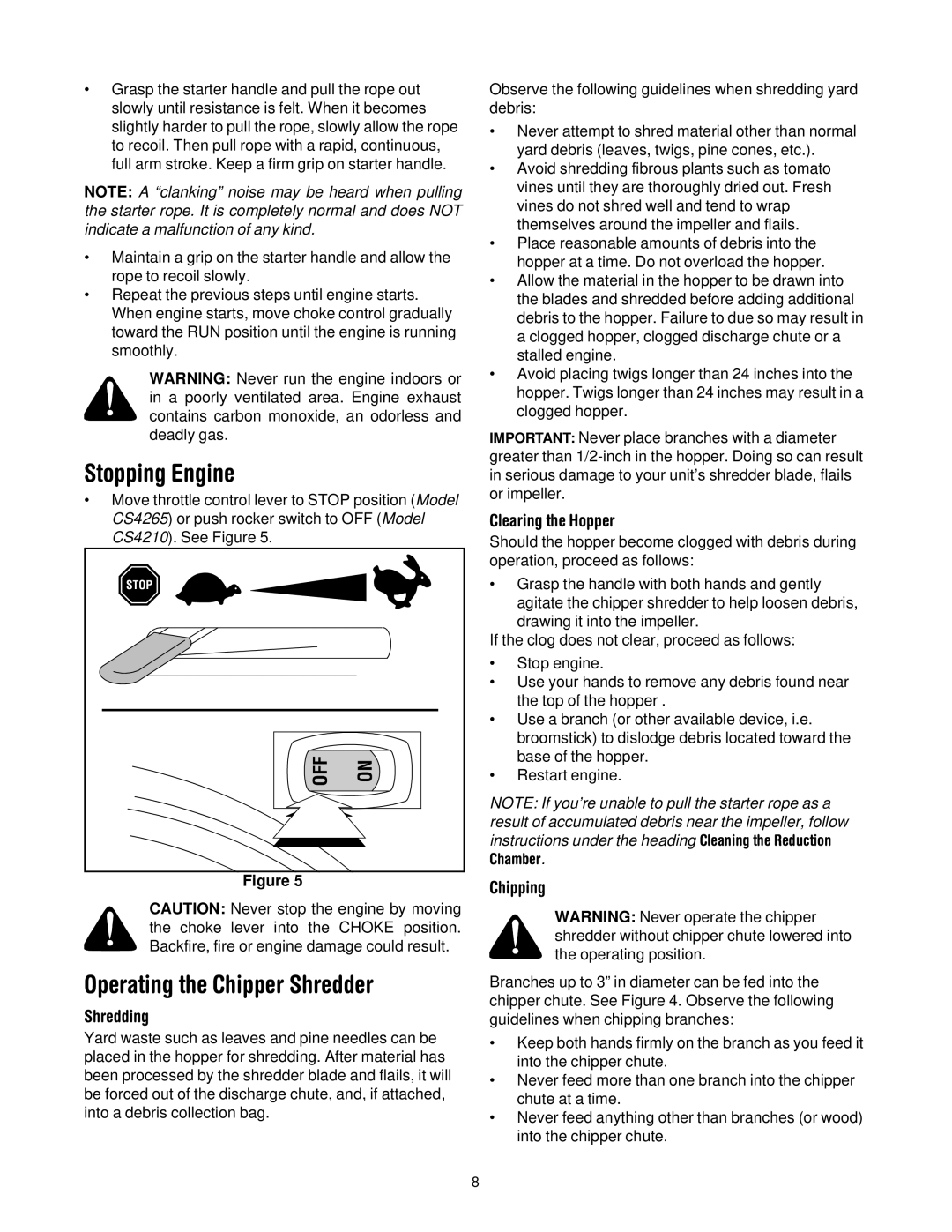CS4210, CS4265 specifications
Troy-Bilt is a trusted name in outdoor power equipment, and their CS4210 and CS4265 chipper shredders reflect the brand’s commitment to quality and efficiency. These machines are designed to help homeowners manage yard waste effectively, turning branches, leaves, and other debris into valuable mulch or compost.The CS4210 is robust yet compact, making it ideal for residential use. It features a 9.5 ft-lb torque overhead valve engine, providing ample power for tackling small to medium-sized branches and yard waste. The 2-in-1 capability of the CS4210 allows users to chip wood up to 3 inches in diameter while simultaneously shredding leaves and smaller debris. This versatility is perfect for homeowners looking to streamline yard upkeep.
On the other hand, the CS4265 offers enhanced features with a larger 11 ft-lb torque engine, allowing it to handle larger branches up to 4 inches in diameter. This model incorporates a heavy-duty steel frame, which enhances durability and reduces vibration during operation. Additionally, the CS4265 comes equipped with a self-feed hopper that automatically pulls in branches, making it easier for users to process larger amounts of waste without needing to force materials into the machine.
Both models are built with ease of use in mind. They feature a hassle-free start system, allowing for quick and easy ignition without the need for priming or choking. The machines have a wide feeding opening that accommodates different types of yard waste, while their compact designs make them easy to maneuver around the yard.
Safety is a priority for Troy-Bilt, exemplified in these models with features such as a no-tool access to the blades, ensuring safe and easy maintenance. The durable shredding blades are designed to withstand wear, providing maximum performance and longevity.
Overall, the Troy-Bilt CS4210 and CS4265 chipper shredders represent an excellent investment for homeowners looking to enhance their landscaping efforts while effectively managing yard waste. With their combination of power, efficiency, and user-friendly features, these machines are indispensable tools for maintaining a tidy and environmentally friendly yard.

